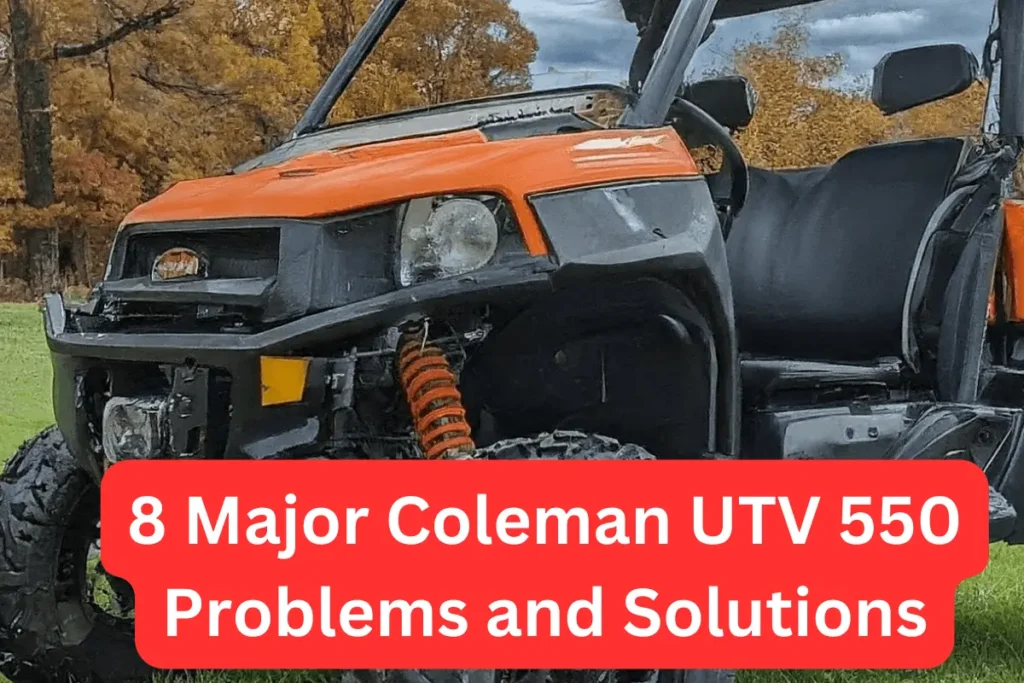The most common Can-Am Defender HD7 problems are starting issues, reverse chain breakage, dead spot in shifter, drive belt issues, fuel system issues, clutch issues and engine problems.
So here we discuss these issues in detail along with their easy solutions. Stay with us to explore the problems with Can-Am Defender.
7 most common Can-Am Defender HD7 problems
Now we are going to discuss the 7 major issues with the Can-Am Defender HD7 with their easy solutions. You can also explore more Can-Am Defender issues.
1. Starting Problems
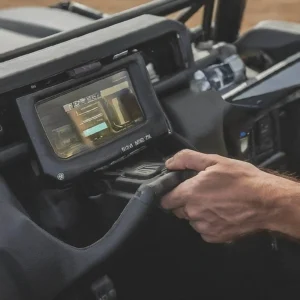
Before we explore the solutions, it is essential to understand the common starting problems that can occur with the Can-Am Defender HD7. These problems can be caused by various factors, including:
- Battery Issues: A weak or dead battery often causes starting issues. If the battery is not providing enough power, the engine may struggle to start or fail to start altogether.
- Fuel System Problems: Issues with the fuel system, such as a clogged fuel filter or a faulty fuel pump, can prevent the engine from receiving the proper amount of fuel, leading to starting difficulties.
- Ignition System Malfunctions: Faulty ignition components, such as spark plugs or ignition coils, can disrupt the ignition process and result in starting problems.
Solutions for Starting Problems
- Check the Battery: Start by inspecting the battery. Ensure that the terminals are clean and securely connected. If the battery is weak or dead, recharge or replace it as necessary. It’s also a good idea to have the battery tested by a professional to determine its overall health.
- Fuel System Maintenance: Regularly maintaining the fuel system can prevent starting issues. Replace the fuel filter according to the manufacturer’s recommendations. If you suspect a faulty fuel pump, have it inspected and replaced if necessary by a qualified technician.
- Ignition System Inspection: Inspect the ignition system components, such as spark plugs and ignition coils. Clean or replace any worn-out spark plugs, and ensure that the ignition coils are functioning correctly. If you are unsure about how to perform these tasks, consult a professional mechanic.
- Check the Starter Motor: The starter motor is responsible for cranking the engine. If you hear a clicking sound when you try to start the vehicle, it could indicate a faulty starter motor. In such cases, it is advisable to have the starter motor inspected and repaired by a professional.
- Electrical Connections: Make sure that all electrical connections, including those related to the ignition system, are clean and secure. Problems with loose or corroded connections can interfere with the starting process. Carefully inspect the wiring and connectors, and address any issues promptly.
- Cold Weather Considerations: If you experience starting problems in cold weather, it could be due to the engine’s cold temperature. Consider using a block heater or a battery blanket to keep the engine warm. Additionally, using a winter-grade fuel can help prevent fuel line freezing.
2. Reverse Chain Breakage
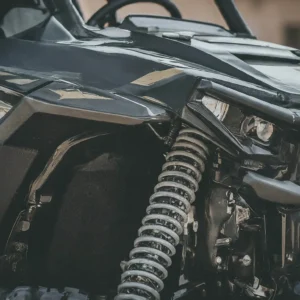
The reverse chain is an essential component in your UTV transmission system. It is responsible for transferring power from the engine to the wheels when you engage the reverse gear. Unfortunately, in some cases, the reverse chain may experience breakage, leading to a loss of reverse functionality.
I. Lack of Lubrication
One of the primary causes of reverse chain breakage is a lack of lubrication. Insufficient lubrication can cause excessive friction and heat, leading to the chain’s failure. To prevent this problem, it is crucial to regularly check and maintain the lubrication levels in your Can-Am Defender HD7.
Solution: Ensure that you follow the manufacturer’s recommended maintenance schedule and use the appropriate lubricant for the transmission system. Regularly inspect the lubrication levels and top up if necessary. If you notice any leaks or unusual noises, it is advisable to consult a professional technician for further inspection and repair.
II. Misalignment or Tension Issues
Misalignment or tension problems can also contribute to reverse chain breakage. If the chain is not properly aligned or if there is excessive tension, it can put unnecessary stress on the chain, leading to its failure.
Solution: Regularly inspect the alignment and tension of the reverse chain. If you notice any misalignment or excessive tension, it is recommended to consult a professional technician for adjustment. They will have the necessary expertise and tools to ensure proper alignment and tension, reducing the risk of chain breakage.
III. Wear and Tear
Over time, the reverse chain can experience wear and tear due to regular use. This wear can weaken the chain and make it more susceptible to breakage.
Solution: Regular maintenance is crucial to prevent excessive wear and tear. Follow the manufacturer’s recommended maintenance schedule, including regular inspections and replacement of worn-out components. By addressing any signs of wear and tear early on, you can prevent more significant issues and prolong the lifespan of your reverse chain.
IV. Improper Use and Abuse
Using your Can-Am Defender HD7 inappropriately or subjecting it to abuse can also contribute to reverse chain breakage. Engaging the reverse gear while the vehicle is still in motion or putting excessive strain on the transmission system can lead to chain failure.
Solution: Always operate your Can-Am Defender HD7 according to the manufacturer’s guidelines and recommendations. Avoid engaging the reverse gear while the vehicle is in motion, and be mindful of the load and terrain conditions to pr event excessive strain on the transmission system. Treating your vehicle with care and respect will help minimize the risk of reverse chain breakage.
4. Dead Spot in Shifter
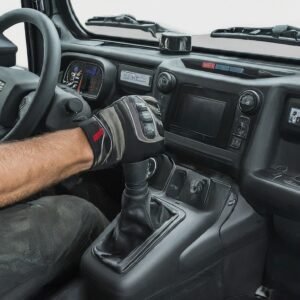
The dead spot in the shifter refers to a specific range of movement where the shifter feels unresponsive or stuck. This can occur when shifting from one gear to another, making it difficult to engage the desired gear smoothly. It is important to address this issue promptly to ensure safe and efficient operation of your Can-Am Defender HD7.
There are several potential causes for the dead spot in the shifter. Knowing these reasons can help you troubleshoot and fix the problem effectively. Let’s look at some common causes and their solutions to help you out:
I. Misalignment of Shift Linkage
If the shift linkage is misaligned, it can create a dead spot in the shifter. To resolve this issue:
- Locate the shift linkage, which is typically located near the transmission.
- Inspect the linkage for any signs of misalignment or damage.
- If misalignment is detected, adjust the linkage by loosening the mounting bolts and realigning it properly.
- Tighten the mounting bolts securely once the linkage is correctly aligned.
II. Worn Shifter Bushings
Over time, the shifter bushings can wear out, leading to a dead spot in the shifter. To address this issue:
- Inspect the shifter bushings for any signs of wear or damage.
- If worn bushings are identified, remove them using appropriate tools.
- Replace the worn bushings with new ones, ensuring a proper fit.
- Securely tighten the new bushings in place.
III. Low Transmission Fluid Level
In some cases, a low transmission fluid level can cause a dead spot in the shifter. To check and address this issue:
- Find the transmission fluid dipstick, which is typically located near the engine.
- Remove the dipstick and wipe it clean with a cloth.
- Put the dipstick back in all the way, then take it out again to check the fluid level.
- If it’s low, add the recommended transmission fluid until it’s at the right level.
- Be cautious not to overfill the transmission fluid.
5. Drive Belt Issues with Can-Am Defender HD7
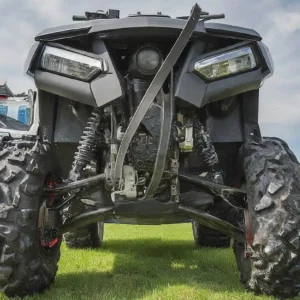
As an owner of a Can-Am Defender HD7, you may encounter certain issues with the drive belt. The drive belt is a critical component of the vehicle’s powertrain system, and any problems with it can affect the performance and functionality of your off-road vehicle. Here I will discuss the common drive belt issues that Can-Am Defender HD7 owners face and provide detailed solutions that even a non-technical person can implement.
I. Drive Belt Slippage
One of the most common issues with the drive belt is slippage. This occurs when the belt fails to grip the pulleys tightly, resulting in a loss of power and reduced performance. Slippage can be caused by various factors, including improper belt tension, worn-out belt, or contamination.
Solution:
To address drive belt slippage, follow these steps:
- Check the belt for any signs of wear or damage. If the belt is worn out or damaged, it needs to be replaced.
- Ensure that the belt tension is within the manufacturer’s recommended specifications. You can find the specific tension values in your vehicle’s owner’s manual.
- Clean the pulleys and belt surfaces to remove any contaminants that might be causing slippage. Use a mild detergent and water to clean the surfaces, and avoid using any harsh chemicals.
- Once the belt is clean and the pulleys are free from contaminants, reassemble the drive belt system and adjust the tension to the recommended specifications.
II. Drive Belt Noise
Another issue that Can-Am Defender HD7 owners may experience is drive belt noise. This can manifest as squealing, chirping, or grinding sounds coming from the drive belt area. Drive belt noise can be caused by misalignment, worn-out belt, or improper belt tension.
Solution:
To address drive belt noise, follow these steps:
- Look for any signs of wear or damage on the belt. If the belt is worn out or damaged, it needs to be replaced.
- Check the alignment of the drive belt and pulleys. Misalignment can cause the belt to rub against the pulleys, resulting in noise. Adjust the alignment if necessary.
- Check if the belt tension meets the manufacturer’s recommended specifications. Adjust it if it’s too loose or too tight.
- If the noise persists after following the above steps, it is recommended to consult a qualified technician for further diagnosis and repair.
III. Drive Belt Overheating
Overheating of the drive belt can occur due to excessive friction or lack of proper cooling. This might cause the belt to wear out and fail prematurely.
Solution:
To prevent drive belt overheating, follow these steps:
- Ensure that the drive belt is properly tensioned. An overtightened or loose belt can cause excessive friction and overheating. Refer to the manufacturer’s specifications for the correct tension.
- Check the condition of the clutch and ensure that it is functioning properly. A malfunctioning clutch can cause the belt to slip, leading to overheating.
- Inspect the cooling system of your Can-Am Defender HD7. Make sure that the cooling fins are clean and free from any debris or obstructions. Adequate airflow is essential for cooling the drive belt.
- Consider installing additional cooling accessories, such as a belt cooling system or heat shields, to prevent overheating.
6. Fuel System Issues
The fuel system in the Can-Am Defender HD7 is responsible for delivering fuel to the engine for combustion. However, various issues can arise that can affect the performance and reliability of the vehicle. Let’s take a look at some of the common fuel system issues:
I. Fuel Contamination
Fuel contamination occurs when foreign substances, such as dirt, water, or rust particles, enter the fuel system. This can lead to clogged fuel filters, injectors, and carburetors, resulting in poor engine performance and potential damage. To prevent fuel contamination, it is essential to use clean and high-quality fuel. Additionally, regular inspection and replacement of fuel filters can help maintain the integrity of the fuel system.
II. Fuel Pump Failure
The fuel pump pumps fuel from the tank to the engine. Over time, the fuel pump may experience wear and tear, leading to decreased fuel pressure or complete failure. Signs of fuel pump failure include engine misfires, difficulty starting the vehicle, and loss of power. If you suspect a fuel pump issue, it is recommended to have it inspected and replaced by a qualified mechanic.
III. Fuel Line Leaks
Fuel line leaks can occur due to damaged or deteriorated fuel lines. These leaks can result in fuel odor, decreased fuel efficiency, and potential fire hazards. If you notice any signs of fuel line leaks, such as visible fuel stains or a strong smell of gasoline, it is crucial to address the issue immediately. Replacing damaged fuel lines with new ones is the most effective solution to resolve this issue.
Solutions
Now that we have discussed the common fuel system issues, let’s explore some solutions that can be implemented by non-technical individuals:
1. Regular Fuel System Maintenance
Maintaining a regular fuel system maintenance schedule is essential to prevent and address potential issues. This includes inspecting and replacing fuel filters, checking for fuel leaks, and ensuring the proper functioning of the fuel pump. By following the manufacturer’s recommended maintenance guidelines, you can significantly reduce the risk of fuel system problems.
2. Use High-Quality Fuel
Using clean and high-quality fuel is crucial for the proper functioning of the fuel system. Avoid filling up your Can-Am Defender HD7 with fuel from unreliable sources or those with a questionable reputation. It is also recommended to use fuel additives periodically to keep the fuel system clean and free from contaminants.
3. Promptly Address Fuel System Issues
If you notice any signs of fuel system issues, such as decreased performance, strange noises, or fuel leaks, it is important to address them promptly. Ignoring these issues can lead to further damage and potentially more expensive repairs. Talk to a professional mechanic to identify and fix the problem properly.
6. Clutch Problems
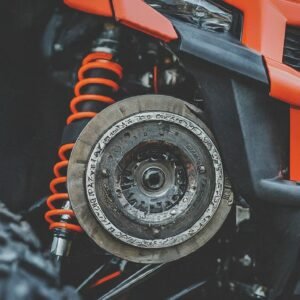
The clutch in your Can-Am Defender HD7 is a vital component that allows you to smoothly engage and disengage the power from the engine to the transmission. When the clutch malfunctions, it can lead to various issues such as slipping, sticking, or grinding noises. Here are some common clutch problems and their solutions:
Slipping Clutch
If you notice that your Can-Am Defender HD7’s clutch is slipping, meaning the engine revs increase without a proportional increase in speed, this could be due to a worn-out clutch disc or pressure plate. The solution to this problem is to replace the clutch disc and pressure plate. It’s best to get professional help for this repair.
Sticking Clutch
A sticking clutch is when the clutch pedal does not return to its normal position after being depressed. This can be caused by a variety of factors, such as a damaged release bearing or a misadjusted clutch cable. To resolve this issue, you can try lubricating the release bearing or adjusting the clutch cable according to the manufacturer’s instructions. If the problem persists, it is advisable to consult a mechanic.
Grinding Noises
If you hear grinding noises when shifting gears, it could indicate a problem with the clutch release bearing. The release bearing may be worn out or damaged, causing it to make unpleasant noises. In this case, replacing the release bearing is the recommended solution. It is important to address this issue promptly to prevent further damage to the clutch system.
Regular Maintenance
Prevention is always better than cure, and the same applies to clutch problems in your Can-Am Defender HD7. Regular maintenance can help prolong the life of your clutch and prevent potential issues. Here are some maintenance tips:
1. Check the Clutch Fluid
Regularly inspect the clutch fluid level and ensure it is at the recommended level. If the fluid is low, you may need to top it up. Refer to your vehicle’s manual for the correct type of clutch fluid to use.
2. Inspect the Clutch Cable
Check the condition of the clutch cable for any signs of wear or damage. Replace the cable if necessary, and make sure it is properly adjusted to ensure smooth clutch operation.
3. Avoid Riding the Clutch
When driving, avoid resting your foot on the clutch pedal. This can cause unnecessary wear and tear on the clutch components and lead to premature failure.
7. Can-Am Defender HD7 Engine Problems
The Can-Am Defender HD7 is a popular utility vehicle known for its durability and versatility. However, like any machine, it may experience engine problems from time to time. In this blog post, I will discuss some common engine problems that can occur with the Can-Am Defender HD7 and provide simple solutions that even a non-technical person can follow.
I. Overheating
Overheating is a common issue that can affect the engine of the Can-Am Defender HD7. This can be caused by a variety of factors, such as a malfunctioning cooling system or a clogged radiator. If you notice that your engine temperature is rising abnormally high, here are some steps you can take to address the issue:
- Check the coolant level: Ensure that the coolant level is sufficient. If it’s low, fill it up with the recommended coolant.
- Inspect the radiator: Look for any signs of clogging or damage. If you notice any debris or blockage, clean the radiator carefully.
- Check the fan: Make sure that the fan is functioning properly. If it is not, it may need to be replaced.
- Keep the vehicle moving: If you are driving in extreme heat conditions, try to keep the vehicle moving at a consistent speed to promote airflow and prevent overheating.
II. Starting Issues
Another common problem that Can-Am Defender HD7 owners may encounter is difficulty starting the engine. This can be frustrating, especially when you are in a hurry to get going. Here are some steps you can take to troubleshoot starting issues:
- Check the battery: Ensure that the battery is fully charged and in good condition. If it is not, consider replacing it.
- Inspect the spark plugs: Faulty or worn-out spark plugs can prevent the engine from starting. Check the condition of the spark plugs and replace them if necessary.
- Verify the fuel supply: Make sure that the vehicle has an adequate supply of fuel. If the fuel level is low, fill up the tank with the correct fuel.
- Consider the weather conditions: In cold weather, the engine may have difficulty starting. If this is the case, you can use a block heater or keep the vehicle in a warm environment to facilitate starting.
III. Loss of Power
Loss of power is another issue that Can-Am Defender HD7 owners may encounter. This can make it difficult to navigate challenging terrains or carry heavy loads. If you notice a significant decrease in engine power, follow these steps to address the problem:
- Check the air filter: A clogged or dirty air filter can restrict airflow to the engine, resulting in a loss of power. Remove the air filter and clean or replace it as needed.
- Inspect the fuel filter: A clogged fuel filter can also contribute to a loss of power. Check the condition of the fuel filter and replace it if necessary.
- Verify the fuel quality: Poor quality or contaminated fuel can affect engine performance. Make sure that you are using clean and high-quality fuel.
- Consider the load: If you are carrying a heavy load, the engine may struggle to maintain power. In such cases, try reducing the load or distributing it more evenly.
Conclusion:
By following this guide you can easily get rid of Can-Am Defender problems because here I provide the complete details about it with their easy solutions.
I hope you again come on this site to know the problems of other UTV models like Cfmoto Uforce 1000 Issues.

